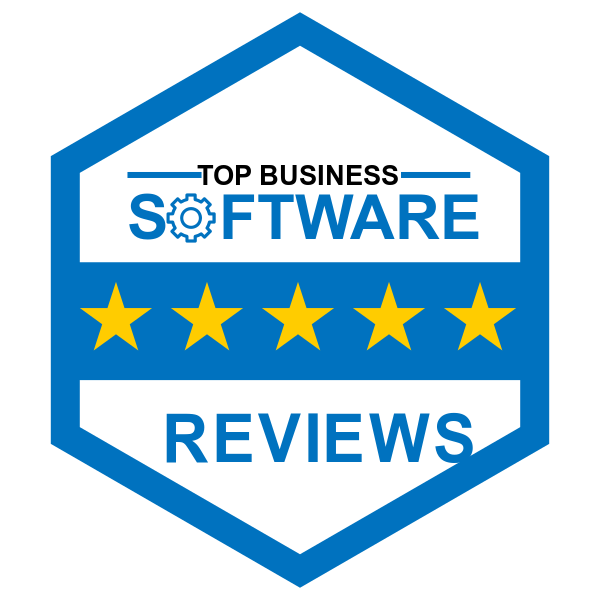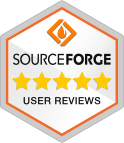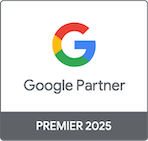Twenty one UK agencies remove click fraud and unlock more than six percent media savings


21 UK agencies
Twenty one marketing agencies in the United Kingdom partnered with ClickPatrol to understand how much of their client media budgets disappeared into click fraud and low quality visits that would never convert.
Across more than five million paid clicks in Google Ads we found that a meaningful slice of spend went to visitors who should never have been in the campaigns in the first place. By automatically identifying and blocking fake and low value traffic sources, the agencies achieved an average saving of more than six percent on media investment while keeping conversion volume stable or higher.
For many clients that translated directly into lower cost per lead, more budget available for the best audiences and cleaner reporting that everyone could trust.
About ClickPatrol
ClickPatrol is a protection and quality control platform for paid media teams. It focuses on one clear promise
Clean data without click fraud drives smarter decisions.
The platform monitors incoming clicks on paid campaigns, identifies fake and low quality traffic patterns and blocks the sources at IP and placement level. The goal is simple. Stop waste before it enters your remarketing pools, dashboards and client reports.
Key capabilities used in this study
- Traffic quality scoring at click level
- Automatic blocking of repeat offenders in Google Ads
- Detailed reports for agencies and their clients that show where budgets are wasted
- Clear proof of savings through before and after comparisons
Customer profile
The cohort in this study consisted of twenty one agencies based in the United Kingdom. Together they manage paid search and paid display budgets for clients across sectors such as
- Business services
- Home improvement
- Ecommerce stores
- Professional services and software
The agencies share three characteristics
- They manage many accounts in parallel
- They are responsible for performance and for explaining results to clients
- Their teams are busy and need tools that do not add heavy manual work
The challenge
Every agency in the group had a version of the same problem.
They suspected that fake clicks, competitors, bots and low intent visitors were quietly consuming part of the budget. They also felt that many remarketing and audience lists were polluted with visitors who would never buy. But it was difficult to prove the size of the problem or to do something about it at scale.
Common pain points
- Budgets used up early in the day without a clear reason
- Sudden spikes in clicks without matching growth in conversions
- High share of clicks from certain placements or locations that rarely converted
- Time wasted on manual IP block lists and ad placement exclusions
- Client calls filled with questions about traffic quality and data trust
The agencies needed a way to quantify the problem, remove waste and present clear results to their clients.
Case Study Approach
Study design
Together with ClickPatrol the agencies agreed on a simple and transparent approach
- Connect Google Ads accounts to ClickPatrol
- Run a period of monitoring to establish a baseline
- Activate automatic blocking rules based on traffic quality signals
- Compare media performance before and after activation
In total ClickPatrol analysed more than five million clicks from search and display campaigns for the twenty one agencies and their clients.
Traffic quality framework
ClickPatrol uses a collection of signals to identify fake and low intent traffic. Among others
- Repeated click behaviour from the same source in a short time frame
- Suspicious device and browser signatures
- Abnormal location patterns versus the target audience
- Interaction patterns that are strongly associated with non human traffic
Clicks that score poorly across these dimensions are flagged. Repeat offenders are blocked at IP level or through other exclusion methods in Google Ads. This removes those sources from future auctions and protects subsequent campaigns.
Implementation
A key requirement from the agencies was that any new tool should be easy to roll out and maintain. The implementation followed three steps.
1. One central setup
Each agency nominated one person to connect their client accounts. This created clear ownership and avoided confusion. Within a short time all relevant accounts were linked and visible in the ClickPatrol dashboard.
2. Light touch configuration
The default protection rules were applied with minimal changes. Only a few clients needed specific adjustments such as stricter rules for very small budgets or slightly softer rules for awareness campaigns with broader audiences.
3. Communication with clients
Agencies used ClickPatrol reports in client meetings to explain
- How much of their budget had been protected
- Which placements and IP ranges were blocked
- How the changes would support better results in future months
This transparency helped to build trust and positioned the agencies as proactive partners who protect their clients investment.
Case study results
Across the more than five million clicks in this study the agencies saw three main outcome areas.
1. Cleaner traffic and reduced waste
On average the agencies achieved a saving of more than six percent of media spend by blocking fake and low quality traffic sources. In practical terms
- A client who spends one hundred thousand per year on Google Ads and recovers six percent effectively gains six thousand in additional budget for real customers
- For larger accounts the recovered amount quickly reaches five figure yearly savings
Important along with the savings the agencies observed stable or improved conversion volumes. In other words they removed waste rather than cutting healthy traffic.
2. Better performance metrics
When low value clicks were removed, key performance indicators improved even where spend stayed at the same level
- Cost per lead dropped as click fraud no longer consumed part of the budget
- Conversion rate increased because the remaining clicks contained a higher share of real prospects
- Return on ad spend became more reliable as it reflected genuine visitors rather than inflated traffic numbers
These changes made it easier for agencies to present clear performance stories to clients and to plan future campaigns.
3. Stronger data foundations
Finally the agencies reported a significant improvement in data quality
- Remarketing audiences contained more real users and fewer fake visitors
- Location and device reports in Google Ads reflected real customer behaviour
- A sudden spike in traffic could be examined with more confidence because fake sources were already filtered out
This aligns directly with the ClickPatrol principle that clean data without click fraud leads to smarter decisions.
Example snapshots
To illustrate how the results appeared in practice, here are three anonymised examples from within the cohort.
Agency one
Performance partner for home services
A client in the home improvement sector struggled with rising cost per lead. After activation of ClickPatrol
- More than seven percent of their monthly spend was reallocated from fake and low value clicks to proven search terms
- Cost per lead dropped by eleven percent over eight weeks
- The client reported fewer irrelevant calls from outside their service area
Agency two
Specialist in business to business software
This agency managed paid search for a software provider with a niche audience. Fake and low intent traffic had an outsized effect because the audience pool was limited.
After three months with ClickPatrol
- Approximately eight percent of spend had been recovered from repeat offenders and suspicious sources
- Sales qualified leads increased while total clicks remained similar
- The agency used ClickPatrol reports as part of quarterly business reviews to show clearly where the budget was now protected
Agency three
Digital agency for ecommerce brands
A retailer with a strong seasonal pattern saw frequent click spikes from display placements that rarely produced sales.
With ClickPatrol active
- Low quality placements were progressively excluded from campaigns
- Shopping campaigns received a larger share of the saved budget
- The client achieved more orders with the same seasonal budget compared with the previous year
What agencies valued most
From feedback sessions with the twenty one agencies several themes emerged.
- Proof and transparency
Agencies could finally show clients how much budget was saved and which sources had been blocked. This turned vague concerns about click fraud into clear numbers and charts. - Protection at scale
Instead of managing long manual block lists in individual accounts, the agencies relied on ClickPatrol to handle this across many clients. This freed the team to focus on strategy and creative work. - Better conversations with clients
With cleaner data and clear savings, account managers could talk about growth opportunities instead of defending fluctuating metrics and unexplained traffic patterns. - Competitive advantage
Offering protection against click fraud became part of the agency sales story when pitching for new clients. It signalled that they take data quality and budget protection seriously.
Lessons learned
The study with twenty one UK agencies highlighted several lessons for any agency that manages paid media budgets.
- Fake and low quality traffic is present in almost every account even when performance looks acceptable on the surface.
- A structured approach to detection and blocking can recover a meaningful share of spend without sacrificing results.
- Clean data is a strategic asset. When dashboards reflect real visitors it becomes much easier to test, learn and grow.
- Tools that work quietly in the background and integrate directly with existing platforms are more likely to be adopted by busy teams.
Final conclusion
Across more than five million clicks and twenty one agencies ClickPatrol delivered an average saving of more than six percent of media spend, improved performance metrics and more reliable data. Agencies gained a new way to protect their clients budgets and to tell a clear performance story backed by evidence.
For any agency that manages multiple accounts and wants cleaner traffic, stronger results and more confident client conversations, this study shows that systematic protection against fake and low value traffic is no longer a nice to have. It is a core part of responsible media management.








What others say about ClickPatrol

Great for Agencies
Pros: Detailed reporting helps identify every invalid click, while automated click blocking saves valuable ad spend. Overall: Managing multiple client campaigns is now much simpler. This tool keeps everything clean from invalid or fake clicks, ensures accurate reporting, and has quickly become a...


Our Single Source of Truth for SEO Performance
What do you like best about ClickPatrol? ClickPatrol has become the definitive source for our organic search performance data. Its reliability is what allows my team to operate with confidence. We no longer have cross-reference data from multiple tools or doubt the numbers in our reports. The...

Digital Marketing Manager
ClickPatrol has completely transformed the way I handle ad campaigns. It quickly identified fake clicks and saved a lot on my ad spend. The dashboard is clean and easy to use, and their support team is always responsive. Definitely a must-have tool for serious marketers!


Reduced click fraud and saved ad budget with ClickPatrol
What do you like best about ClickPatrol? ClickPatrol was incredibly easy to set up it started monitoring our ad campaigns within minutes. The dashboard is clean and gives a clear view of where clicks are coming from. I love how it automatically detects suspicious or bot-like clicks and sends...


Finally, Transparent and Effective Click Fraud Protection
What do you like best about ClickPatrol? ClickPatrol feels like a tool designed by people who actually understand digital marketing pain points. The UI is clean, the fraud detection is accurate, and I can prove ROI improvements quickly to stakeholders. I also love that the pricing model is...

"Protects Every Marketing Dollar!"
Pros: Real-time fraud detection and blocking. Improves lead quality by filtering fake sign-ups. Detailed analytics to optimize campaigns. Alerts notify suspicious activity immediately. Multi-platform integration. Helps reduce wasted ad spend and improves ROI.


Secured Our Digital Growth by Eliminating 30% Wasted Ad Spend
What do you like best about ClickPatrol? As both founder and sales director, ClickPatrol has been crucial for protecting our marketing budget while scaling our spice blends business. The platform's real-time fraud detection immediately identified suspicious click patterns from regions where we...

After trying different anti-fraud tools
After trying different anti-fraud tools, this one is the only service that actually delivered real results. My campaigns are cleaner, my conversions improved, and I feel more confident investing in ads again. Couldn’t be happier with the outcome!

Efficient Tool for Serious Advertisers!
Pros: Gives full transparency into traffic sources. Detects bots, VPNs, and duplicate clicks. Easy to customize the blocking settings.


Protected Our Digital Ad Spend and Improved Campaign ROI by 35%
What do you like best about ClickPatrol? ClickPatrol has been essential for safeguarding our digital advertising budget across multiple platforms. The tool seamlessly integrates with our Google Ads and social media campaigns, automatically detecting and blocking fraudulent clicks in real-time. The...

ClickPatrol has completely transformed the way I handle ad campaigns
ClickPatrol has completely transformed the way I handle ad campaigns. It quickly identified fake clicks and saved a lot on my ad spend. The dashboard is clean and easy to use, and their support team is always responsive. Definitely a must-have tool for serious marketers!

Great Protection and Excellent Support
Pros: Customer support is friendly and responsive. Setup was simple, and the reports are visually excellent. Real-time protection runs smoothly.

